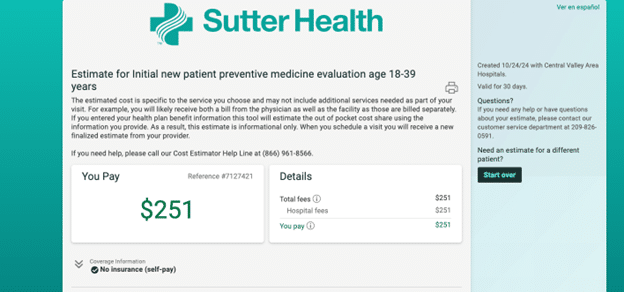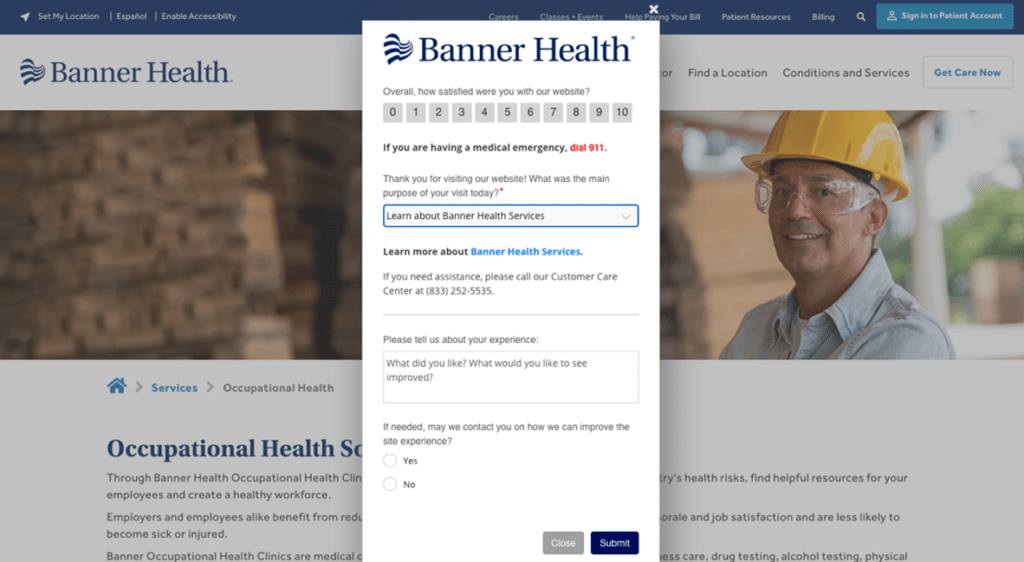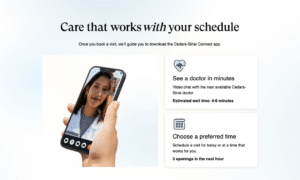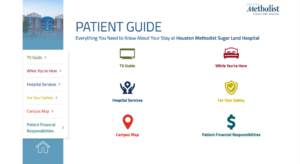Summary
- Healthcare consumerism gives patients the power of choice regarding their care.
- Hospitals that prioritize patient-centric services like virtual appointments, online scheduling, and user-friendly tools stand out as consumer-friendly organizations.
- Building healthcare consumerism into your content strategy can boost patient acquisition and retention.
Healthcare consumerism: More than a buzzword
Right now, you can buy just about anything and have it delivered within days (or minutes). A gluten-free pizza … a box of dog diapers … a shirt with your spouse’s face on it … you name it.
If only it were that easy to be seen by your doctor or get a prescription.
“Healthcare consumerism” is one of those phrases that makes brains zone out and eyes gloss over. But it plays an important role in how people decide where to go for their care.
What is healthcare consumerism?
Healthcare consumerism embodies a shift in mindset about patient decision-making. It’s the idea that patients should be able to “shop around” for their care, like they would before buying any other product or service.
In other words, patients don’t have to go to the hospital they were referred to because it’s the only option. They have the power of choice. Before choosing a provider or health system, they can:
- Read physician profiles
- Sift through online reviews
- Compare prices
- Receive second opinions
So hospitals must up the ante to compete. Patients have expectations when it comes to access to care, convenience, and the overall experience … and hospitals must meet those expectations.
But how?
The basics of customer-centered healthcare
Patient-centric marketing is about creating a digital presence that shows people, “We care about your needs.”
To start, a consumer-centered healthcare organization gets the basics right:
- Offers virtual appointments: Today’s patients want the option to be seen virtually for straightforward issues. They don’t want to take extra time off work and drive in traffic to get a prescription for their UTI. Most of them want to talk symptoms over a video call, get the medication, and be done with it.
- Allows online scheduling: “Our call volume is higher than average right now. There are 11 callers ahead of you.” Sigh. Don’t put patients through this — let them book and modify appointments online, if they so choose.
- Understands what patients want: What factors drive a patient to choose your hospital or stay loyal to one health system? Look at the data: patient surveys, studies, and your analytics. (For example, we ran a survey to better understand how patients choose their doctors.)
- Provides options: In other industries, people can tailor their experiences. Why not in healthcare? Give patients the power of choice for factors like appointment times, locations, providers, and treatments (when possible).
- Offers consumer-friendly perks: Do you offer same-day appointments? Evening hours? A walk-in lab? These kinds of offerings could convert website visitors to new patients. If you got ‘em, flaunt ‘em (in your content).
Healthcare consumerism examples: 5 hospitals doing it right
See examples of healthcare consumerism best practices in action.
1. Providence’s convenient “Find a Doctor” search filters
When you’re looking for a doctor, you aren’t just looking for any doctor within a 25-mile radius. You’re looking for a doctor who offers what you need, takes your insurance, and checks all the other boxes.
Providence knows this about healthcare consumers. So they offer several filters on their Find a Doctor page to make the search for a physician more convenient.
2. Sutter Health’s price transparency tool
Hospitals are legally required to make pricing information available online. This mandate is meant to help healthcare consumers make informed decisions.
But price transparency can quickly become opaque. The rule requires hospitals to report multiple payers’ charges for *300* services. It’s a lot of information at once — and a type of data that consumers aren’t used to navigating.
Sutter Health’s cost estimator tool makes this information more accessible to healthcare consumers. After answering prompts about the type of service and preferred location, consumers receive real-time estimates based on their insurance.
3. Banner Health’s user feedback button
Data gives you an advantage when it comes to healthcare consumerism. Through surveys, you can learn what patients like and don’t like about the user experience (UX) of your website (or another digital touchpoint).
The survey doesn’t need to be extensive. Banner Health promotes their website survey with a floating “Feedback” button on the site’s main pages. This 30-second form collects insights they can use to improve UX and drive consumer satisfaction.
4. Cedars-Sinai’s consumer-centric app marketing
Patient-centric marketing is benefits-focused. Healthcare consumers shouldn’t need to jump through hoops to understand the benefits of your services or products. Your copy should make them clear.
For example, why should people download Cedars-Sinai’s Connect app? Their hospital app landing page copy provides 4 reasons.
And if that weren’t consumer-centric enough, look at what patients see when they click “Get Care Now.” Estimated wait times and info about availability. (In other words, the kind of information they want to know ASAP.)
5. Houston Methodist’s patient guides
Healthcare consumerism isn’t just about giving people good vibes before they become your patients.
It’s also knowing that they can change their minds and switch health systems at any time. It’s the pursuit of consistent customer satisfaction, which drives brand loyalty.
Houston Methodist gets this. They also understand that patients often have questions during their hospital stays:
- Where is that café located?
- How do I work this remote?
- How can I order food to the room?
That’s why Houston Methodist offers handy patient guides that cover “everything you need to know about your stay” at their hospitals.
Build healthcare consumerism into your content strategy
Healthcare consumerism isn’t a buzzword or trend. It’s the present (and future) of healthcare. Adapt your content marketing strategy to account for it, and watch your efforts translate to more patients and greater loyalty.
Want more healthcare consumerism tips?
Learn more marketing strategies and tactics that can make your health system the #1 choice in your area.
Subscribe to our newsletter to keep informed.








